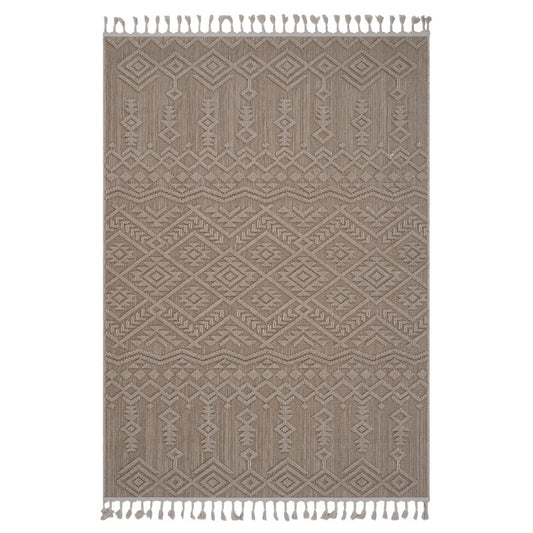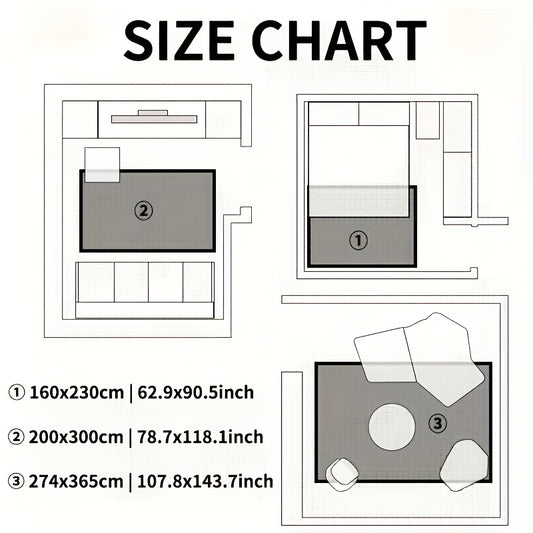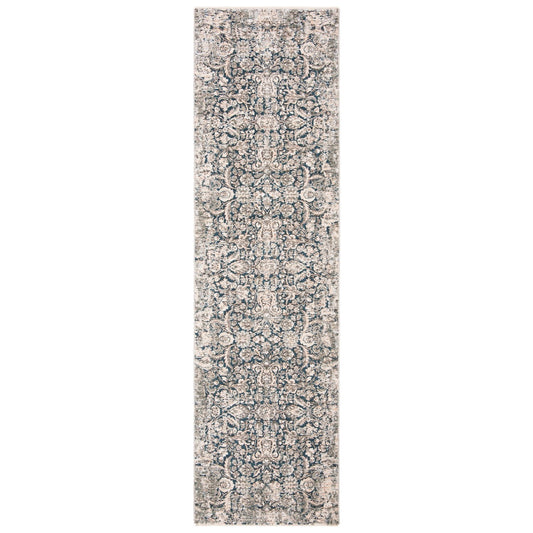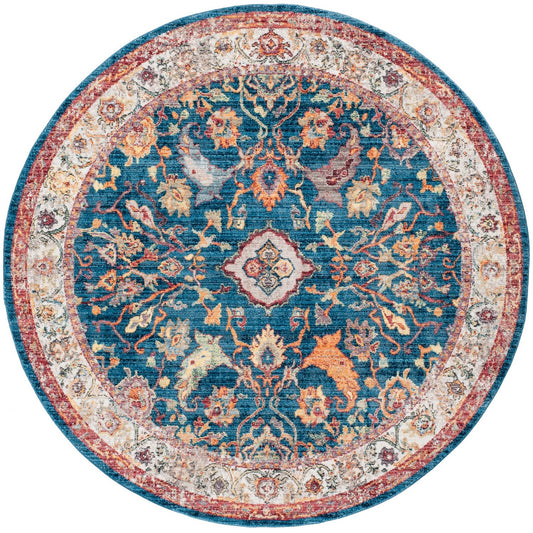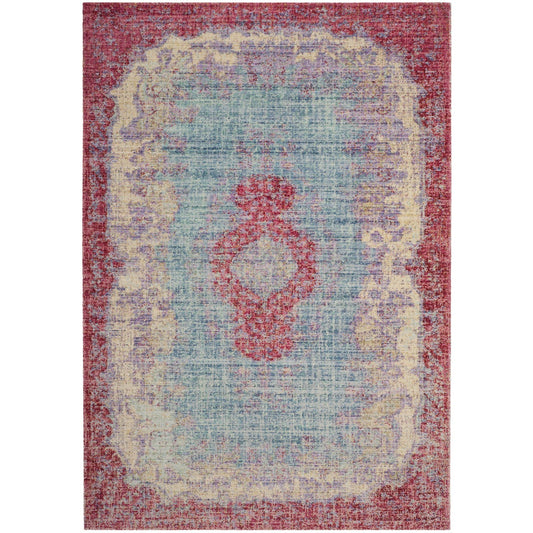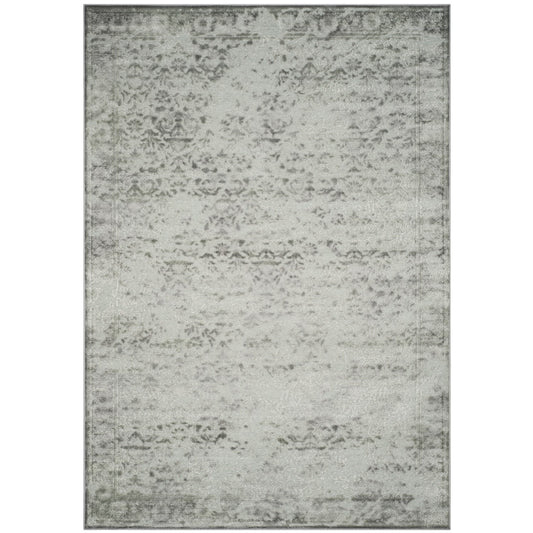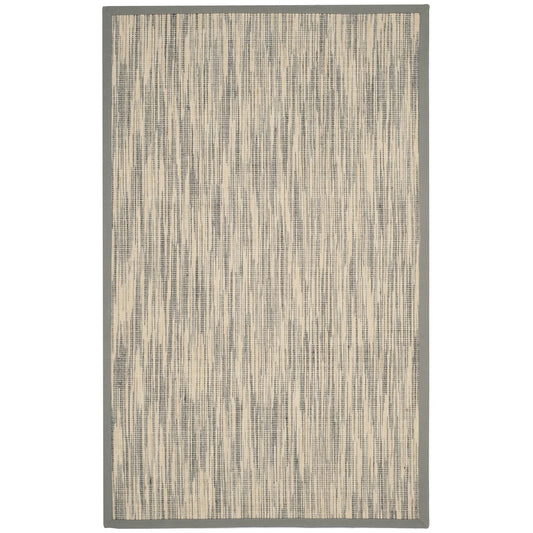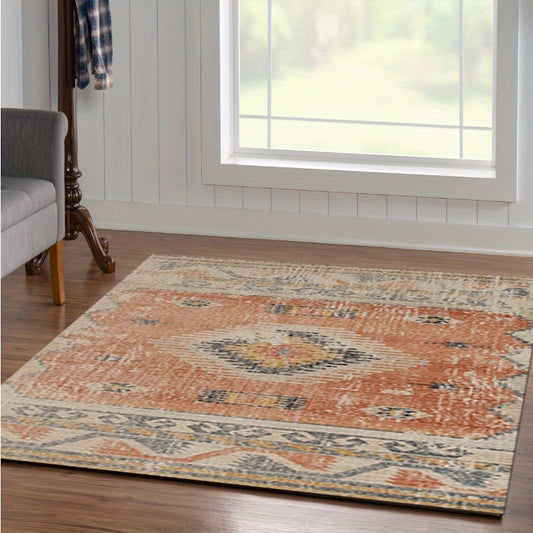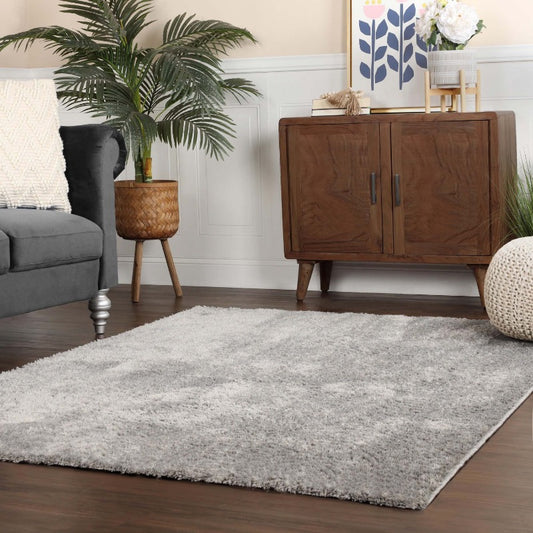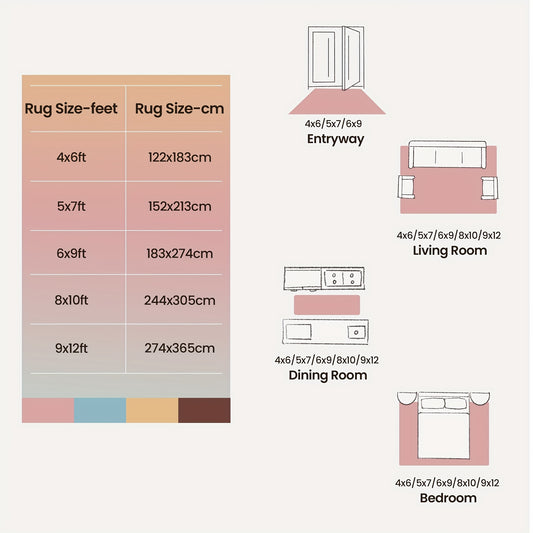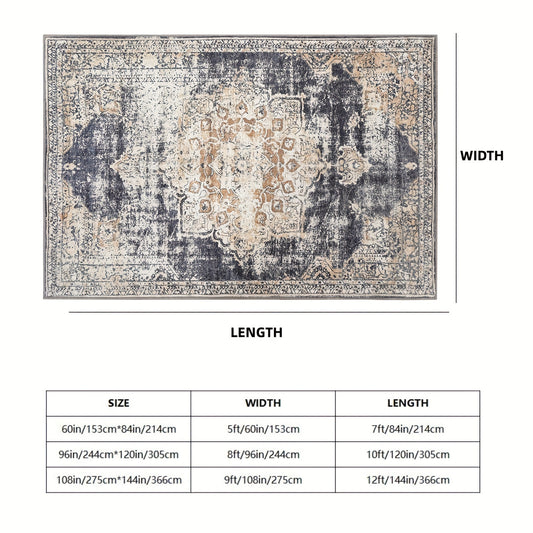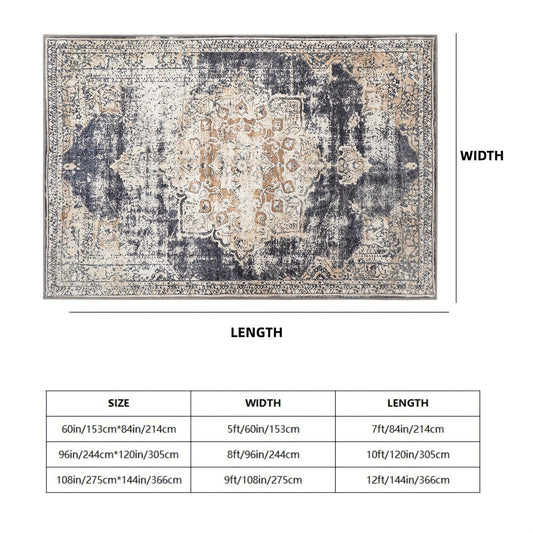About Living Room Rugs
The Timeless Importance Of Living Room Rugs
Living room rugs stand as the centerpiece of one of the most vital areas in any home. They are not just furnishings but cultural artifacts, woven symbols of beauty and practicality, and essential foundations of domestic elegance. A living room rug has the power to tie an interior together, providing cohesion, warmth, and an undeniable sense of refinement. Whether woven from wool, silk, or innovative sustainable fibers, these rugs bring balance between artistry and function.
Historical Evolution Of Rugs
Rugs trace their roots back thousands of years. Originally designed for protection against cold floors and to offer comfort within nomadic tents, they quickly transcended utility. As weaving techniques developed, rugs became objects of beauty, status, and cultural storytelling. Each region infused its rugs with motifs and colors that reflected heritage, environment, and philosophy. The living room rug today carries echoes of these traditions. It is not merely a surface covering but an heirloom in the making—a testament to artistry that connects past and present.
In European drawing rooms of the 18th and 19th centuries, Persian and Oriental rugs symbolized wealth and sophistication. In Asian homes, symmetrical motifs embodied harmony, while in Middle Eastern households, intricately woven carpets signaled hospitality and sanctity. Over time, as the living room became the heart of family gatherings, rugs naturally assumed their place as anchors of the domestic landscape.
Design As A Language
The design of a rug is a silent but eloquent language. In living rooms, where the interplay of furniture, art, and light defines ambiance, rugs carry significant weight. A patterned rug may become the focal point, while a minimalist weave can allow other elements to shine.
Design elements fall into several broad categories:
-
Traditional: Rich floral medallions, arabesques, and geometric repeats.
-
Modern: Abstract art-inspired designs, bold blocks of color, and asymmetry.
-
Transitional: Hybrids that merge traditional motifs with modern palettes, offering timeless adaptability.
Fabulive’s living room rug collection emphasizes this spectrum. Their pieces range from subdued neutrals for contemporary spaces to ornate designs for traditional interiors. Each rug is crafted with careful proportion, ensuring it enhances the architecture of a space rather than overwhelming it.
Materials And Texture
The tactile quality of a rug is as important as its design. Wool remains the benchmark for durability and softness, prized for its resilience under daily use. Silk introduces sheen and delicacy, best suited to formal living rooms where rugs function as art. Cotton offers lightness and versatility, perfect for flatweaves. Modern fibers—viscose, bamboo silk, or recycled textiles—add luster while aligning with sustainability.
Texture further defines experience. High-pile rugs offer plush luxury, absorbing sound and providing warmth. Flatweaves project minimalism and practicality, making them ideal for layered styling. Fabulive’s collections highlight both ends of the spectrum, from soft hand-tufted creations to finely knotted masterpieces.
Functionality As Luxury
Luxury lies not only in appearance but in usefulness. Living room rugs provide:
-
Comfort: A soft layer underfoot, elevating everyday living.
-
Acoustics: Sound absorption that softens conversations and creates intimacy.
-
Safety: Reduced slipping, particularly in homes with children or elders.
-
Spatial Definition: Rugs anchor furniture groupings, structuring open-plan interiors.
These functions transform rugs from decoration into foundations of living. They enrich both practical and emotional dimensions of daily life.
Cultural Significance
Across cultures, rugs embody meaning. In Middle Eastern households, they represent hospitality; in European salons, sophistication; in Asian homes, harmony. Living room rugs today inherit these layered identities. A handwoven rug in a modern loft links the present to global traditions, demonstrating that cultural narratives transcend time.
Materials, Craftsmanship, And The Language Of Luxury
The essence of any living room rug lies in its materials and craftsmanship. While design appeals to the eye, materials speak to the senses and craftsmanship ensures longevity. A rug that is woven with precision, using fibers of exceptional quality, transcends decoration to become an heirloom. In luxury interiors, it is this combination of artistry and engineering that distinguishes a rug from the ordinary.
Anatomy Of A Well-Made Rug
A well-constructed rug consists of several elements working harmoniously:
-
Foundation: The warp and weft threads, often made of cotton or silk, provide structural integrity.
-
Pile: Wool, silk, or blended fibers form the visible surface. This is where softness, luster, and resilience manifest.
-
Knots: In handwoven rugs, knots per square inch determine clarity of design. Finer knots yield intricate patterns, while coarser ones create bold simplicity.
-
Finishing: Processes such as trimming, washing, and binding edges refine the rug’s character.
Luxury rugs distinguish themselves through balance. They are supple yet strong, detailed yet harmonious, and capable of enduring decades of use without losing integrity.
Wool: The Timeless Standard
Wool remains the preferred material for living room rugs, celebrated for durability, natural stain resistance, and warmth. Its fibers absorb dyes deeply, producing rich hues that resist fading. In climates both warm and cold, wool regulates temperature, providing comfort throughout the year. A wool rug in the living room not only looks refined but also supports daily life with resilience.
Silk: The Pinnacle Of Elegance
Silk rugs represent the zenith of refinement. Their sheen reflects light with brilliance, transforming designs into shimmering artworks. While less durable than wool, silk is used strategically—in highlights, motifs, or full compositions. In formal living rooms, silk rugs are less about function and more about artistry. They signal connoisseurship, taste, and appreciation of craft.
Cotton And Modern Fibers
Cotton serves as a versatile foundation, lending flexibility and affordability. Though less resilient than wool, cotton rugs excel in flatweave designs. Modern fibers, however, have introduced new opportunities. Viscose and bamboo silk replicate silk’s sheen at lower cost. Recycled fibers align with sustainability values while maintaining elegance. These innovations broaden accessibility to luxury, ensuring that refinement can coexist with responsibility.
Craftsmanship As Silent Luxury
The craftsmanship behind a rug is often invisible to casual observers yet central to luxury. Hand-knotting, for example, is a labor-intensive process requiring months or even years of work. Each knot is tied by artisans who preserve traditions passed down through generations. This human touch imbues rugs with individuality. Even small imperfections become marks of authenticity, distinguishing handwoven pieces from mass-produced imitations.
Machine-made rugs, though faster to produce, can also achieve remarkable quality when designed with precision. Advanced looms replicate traditional motifs with efficiency, offering durability at accessible price points. What matters most is intent: rugs crafted with respect for design and materials, whether by hand or machine, exude authenticity.
Fabulive’s living room rug collection exemplifies this philosophy. By sourcing premium materials and working with skilled artisans, Fabulive ensures that each rug balances durability with beauty. These are not temporary adornments but investments in cultural and personal heritage.
Tradition And Innovation In Dialogue
The most compelling rugs are born from a dialogue between tradition and innovation. Handwoven Persian motifs carry centuries of history, while contemporary design technologies allow experimentation with abstraction and scale. Materials, too, reflect this dialogue: natural wool and silk sit alongside recycled blends. Sustainability is not a compromise but a progression of luxury values.
For living room rugs, this conversation is vital. Homes today demand pieces that honor heritage while resonating with modern aesthetics. Transitional rugs, blending traditional motifs with modern palettes, embody this spirit of dialogue. They bridge eras, making them versatile across diverse interiors.
Functionality Reinvented
Functionality in rugs has expanded. Today’s consumers expect durability, stain resistance, and hypoallergenic properties. Advanced treatments protect against spills, while fade-resistant dyes ensure longevity even in sunlit rooms. Rugs are also engineered for households with children and pets, where luxury must coexist with practicality.
In this sense, living room rugs no longer demand compromise. They embody the best of both worlds—refinement for the connoisseur and resilience for everyday life.
Fabulive’s Language Of Luxury
What sets Fabulive apart is its philosophy of balance. Fabulive’s rugs are curated not just as décor but as cultural and personal investments. Their collections demonstrate respect for craftsmanship while embracing innovation. Each rug becomes a narrative—of heritage, of artistry, and of daily living. By blending authenticity with responsibility, Fabulive reinforces its place in the modern luxury market.
A Fabulive living room rug is not chosen casually. It is acquired with intention, a recognition of beauty’s ability to transform domestic space. From materials to construction, every detail reflects the brand’s commitment to refinement and long-term value.
Styling Narratives And Spatial Integration
Living room rugs are not merely placed; they are styled. Their success depends on how they integrate within interiors—defining space, influencing ambiance, and shaping the narrative of the room. A rug acts as the connective tissue between furniture, architecture, and lifestyle. When chosen thoughtfully, it has the power to transform the ordinary into the exceptional.
The Rug As A Foundation Of Space
The living room often functions as the most multifunctional environment in the home—hosting gatherings, reflecting personal identity, and creating comfort. Rugs serve as the foundation of this space, both literally and visually. By anchoring furniture, they create cohesion. Sofas, coffee tables, and armchairs appear intentionally grouped rather than scattered. This grounding effect is essential in both open-plan layouts and traditional living rooms.
Spatial proportion is critical. A rug that is too small diminishes presence, creating a disjointed feel. Conversely, an oversized rug risks overwhelming. The ideal size strikes balance, with front legs of seating resting upon it to unify arrangements. This proportional harmony defines luxury—precision, balance, and deliberate placement.
Layering As A Stylistic Tool
Layering rugs has emerged as a sophisticated design practice. By placing smaller rugs atop larger bases, designers create visual interest and depth. A neutral foundation rug—perhaps a flatweave wool—can serve as the canvas, while a richly patterned or textured piece adds dimension above it.
Layering also allows flexibility in seasonal styling. Lighter flatweaves dominate in summer, offering breathability and freshness. In colder months, plush or high-pile rugs can be layered for warmth and opulence. This adaptability ensures that living room rugs evolve with lifestyle and climate, reinforcing their role as active participants in interior narratives.
Minimalism Versus Maximalism
Styling with rugs often reflects broader aesthetic philosophies.
-
Minimalism: In minimalist interiors, rugs serve as subtle foundations. Neutral palettes—ivory, grey, beige—harmonize with clean-lined furniture. Texture becomes more important than pattern. Flatweaves, subtle tonal gradations, or monochrome designs embody restraint while still anchoring space. The effect is calm, uncluttered, and timeless.
-
Maximalism: In maximalist interiors, rugs take on a starring role. Bold patterns, vibrant colors, and oversized motifs dominate. A richly hued rug becomes a focal point around which eclectic furniture and art revolve. Here, the rug’s purpose is not restraint but celebration, embodying personality and abundance.
Both approaches can be luxurious when executed with intention. Fabulive recognizes this duality, offering collections that satisfy minimalists’ desire for subtlety and maximalists’ appetite for expression.
The Role Of Color Theory
Color is central to styling rugs. It influences mood, alters perception of space, and unifies or contrasts with décor.
-
Warm Tones: Rust, gold, burgundy, and chestnut create intimacy. They shrink large spaces visually, making them feel welcoming.
-
Cool Tones: Blues, greens, and silvers evoke serenity. They expand smaller rooms, offering calm spaciousness.
-
Neutrals: Ivory, beige, and grey serve as flexible backdrops, harmonizing with diverse palettes.
-
Contrasts: Bold contrasts between rug and furnishings generate energy. A deep indigo rug under pale upholstery creates striking dynamism.
Understanding color psychology empowers homeowners to align rugs with the emotional identity of their living rooms. For instance, a deep blue rug may promote tranquility in a busy household, while a golden-hued design enhances warmth during winter months.
Seasonal Styling
Rugs adapt to seasons with remarkable ease. Their fibers, textures, and colors all influence perception across climates:
-
Spring: Lighter palettes, floral motifs, and breathable flatweaves mirror renewal.
-
Summer: Cool tones and natural fibers maintain freshness in heated months.
-
Autumn: Warm earth tones and thicker textures introduce coziness.
-
Winter: Plush, high-pile rugs provide insulation and luxury, softening the austerity of colder days.
Seasonal adaptability underscores rugs’ role as living décor—objects that evolve with time, not static furnishings.
Styling Across Global Interiors
The universality of living room rugs allows them to adapt to cultural contexts worldwide.
-
Scandinavian Minimalism: Light, neutral rugs with simple textures complement wood accents and clean lines.
-
Mediterranean Warmth: Terracotta, ochre, and intricate patterns echo sun-drenched landscapes.
-
Asian Balance: Symmetry, muted tones, and natural fibers align with philosophies of harmony.
-
Middle Eastern Opulence: Richly patterned, jewel-toned rugs enhance gilded furniture and intricate décor.
-
North American Eclecticism: Transitional rugs bridge tradition and modernity, suiting homes that combine classic and contemporary elements.
This global adaptability reflects rugs’ capacity to serve as cultural connectors—translating heritage into modern lifestyles.
The Statement Rug
A statement rug transforms the living room into a curated gallery. Often featuring bold motifs, oversized patterns, or avant-garde abstraction, statement rugs act as visual anchors. They demand attention, framing the rest of the room’s narrative. For homeowners and designers who view interiors as personal storytelling, statement rugs are indispensable.
Their presence requires careful balance. Surrounding furniture and décor must defer without vanishing, allowing the rug to shine as protagonist. Fabulive’s statement pieces exemplify this balance, delivering artistry without overwhelming functionality.
Rugs As Heirlooms
Styling extends beyond the present moment into legacy. Rugs, unlike many furnishings, endure across decades and generations. Their durability and timeless design transform them into heirlooms. In many families, living room rugs carry memories of milestones—gatherings, celebrations, and quiet evenings. Each mark or fading pattern becomes part of their story. Styling them thoughtfully honors both heritage and future continuity.
The Fabulive Styling Philosophy
Fabulive approaches living room rugs as more than accessories. They are curations of lifestyle, designed to harmonize interiors while elevating them. By offering collections that embrace subtle neutrals, bold statements, and transitional hybrids, Fabulive ensures that every home finds its perfect foundation.
Their design ethos emphasizes:
-
Proportion: Rugs sized to ground furniture effectively.
-
Palette: Colors chosen for harmony and adaptability.
-
Texture: Varied surfaces to balance luxury with daily practicality.
-
Narrative: Each rug tells a story, linking global heritage with modern taste.
This philosophy makes Fabulive’s rugs investments not only in décor but in identity. They embody refinement without rigidity, adapting to diverse households while maintaining elegance.
Maintenance, Sustainability, And Conscious Living
A rug is only as beautiful as the care it receives. For living room rugs—often the most used and most visible textiles in a home—maintenance is not a burden but a ritual. It is a practice that preserves color, texture, and narrative. When combined with sustainable design and ethical sourcing, maintenance extends beyond utility to embody conscious luxury. A rug that is cared for responsibly is not just a furnishing; it becomes a living artifact of elegance and values.
The Art Of Rug Maintenance
Caring for a living room rug begins with understanding its material. Wool, silk, cotton, and blends each respond differently to cleaning, wear, and environmental conditions.
-
Vacuuming: Regular vacuuming prevents dust and grit from embedding in fibers. For wool rugs, a gentle suction setting preserves pile softness. For silk, extra care avoids fiber breakage. Vacuuming should follow the direction of the weave to maintain integrity.
-
Rotation: Rugs exposed to sunlight or foot traffic should be rotated every six months. This prevents uneven fading and wear, ensuring balanced longevity.
-
Spot Cleaning: Spills should be blotted, not rubbed, with absorbent cloths. Mild, pH-neutral solutions preserve dye vibrancy. Harsh chemicals strip color and weaken fibers.
-
Professional Washing: Periodic professional cleaning, especially for silk or high-value rugs, refreshes fibers without damaging structure. Experts use traditional washing methods that honor craftsmanship.
These rituals are not indulgences—they are investments in permanence. A well-maintained rug can endure decades, gaining patina and character along the way.
Longevity As Luxury
Longevity defines true luxury. A rug that fades quickly or frays under minimal stress cannot claim refinement. Living room rugs must endure constant use—footsteps, gatherings, daily life—while retaining elegance. Wool excels in resilience, naturally springing back under pressure. Silk, though delicate, retains sheen when treated with respect. Blended fibers extend versatility.
Longevity also builds narrative. A rug that ages gracefully acquires beauty in its subtleties: softened colors, a sheen from wear, or faint imprints of furniture. These are not flaws but stories. Families often recall milestones through their rugs—the birthday party stains long since faded, the coffee spill carefully cleaned, the countless evenings gathered around it. Longevity, then, transforms rugs into living histories.
Sustainability In Luxury Rugs
Modern consumers increasingly demand sustainability. For rugs, this translates into sourcing, production, and lifecycle.
-
Ethical Sourcing: Fibers like wool and silk must be obtained through responsible practices that respect animals, land, and communities.
-
Eco-Friendly Dyeing: Natural or low-impact dyes reduce water waste and chemical runoff. They also produce tones of unique richness.
-
Recycled Materials: Rugs made with recycled fibers align with circular economies, reducing landfill contribution.
-
Biodegradable Foundations: Cotton and jute foundations ensure rugs return to the earth at the end of their lifecycle.
Sustainability is not the absence of luxury but its redefinition. A rug that embodies ethics, durability, and beauty represents modern refinement.
Conscious Consumerism
Today’s buyer seeks more than aesthetics. They want transparency—knowledge of where materials come from, how artisans are treated, and whether production harms or heals ecosystems. Conscious consumerism has elevated rugs from products to principles. Owning a rug becomes an act of responsibility as much as taste.
Light-colored wool rugs in Scandinavian homes align with minimalism and environmental harmony. Recycled-fiber rugs in urban lofts reflect innovation and responsibility. Everywhere, conscious choices project identity: who we are, what we value, and how we live.
The Psychological Dimension Of Care
Caring for a rug also has emotional resonance. Rituals of vacuuming, rotating, or gently brushing fibers build connection. Homeowners often describe satisfaction in preserving beauty, knowing they are custodians of artistry. This psychological bond transforms rugs from objects into companions. They are not consumed and discarded but cherished and sustained.
Case Studies In Maintenance And Sustainability
The Professional Collector
A collector invests in silk-and-wool rugs for her formal living room. By relying on professional washing and careful rotation, she ensures vibrancy for decades. Her rugs double as investments, their value appreciating with care.
The Family Household
In a busy home with children and pets, a wool rug anchors the living room. Stain-resistant treatments and routine vacuuming preserve its softness. Despite daily wear, the rug endures, symbolizing resilience alongside beauty.
The Eco-Conscious Minimalist
A young professional in Berlin invests in a rug woven from recycled fibers. Beyond aesthetics, she values its sustainability, seeing it as an extension of her principles. With careful maintenance, the rug remains a stylish centerpiece while minimizing environmental impact.
Fabulive’s Commitment To Responsibility
Fabulive’s living room rug collection demonstrates how luxury can coexist with sustainability. By sourcing responsibly, using eco-conscious dyes, and emphasizing durable craftsmanship, Fabulive ensures that rugs are not only beautiful but ethical. Their pieces invite buyers into a philosophy of ownership that values longevity, responsibility, and artistry.
Each rug in Fabulive’s collection reflects this ethos: an object that honors artisanship, respects the planet, and elevates interiors. By blending aesthetics with principles, Fabulive redefines the meaning of refined living.
Looking Toward The Future
The future of living room rugs lies in responsibility. As sustainability becomes inseparable from luxury, rugs will evolve toward even greater transparency and innovation. Advances in biodegradable fibers, eco-safe finishes, and fair-trade certifications will strengthen consumer trust.
Yet amid innovation, the essence remains unchanged: rugs are cultural artifacts that enrich domestic life. What changes is the lens through which we evaluate them. Beauty without responsibility is incomplete. The modern luxury rug must embody both.
Long-Term Value And FAQs
Luxury in its truest form is measured not by momentary brilliance but by the ability to endure. Living room rugs exemplify this principle. Their value lies not only in immediate visual impact but in their permanence—how they withstand time, adapt to generations, and evolve from decoration to heirloom. A well-chosen rug becomes more than a furnishing; it becomes part of family history, shaping and witnessing the life lived around it.
Rugs As Generational Heirlooms
Unlike many pieces of décor that are replaced with changing fashions, a rug possesses the capacity to transcend trends. Handwoven rugs, in particular, can last for decades, even centuries. Their fibers soften but do not disintegrate, their patterns fade gracefully without losing clarity, and their stories accumulate with use. Families often treasure rugs not for perfection but for patina—the softened tones, the slight wear, the unmistakable evidence of life.
These qualities make living room rugs unique among furnishings. A sofa or armchair may wear out, but a rug gains character. It is passed from parents to children, carrying with it not only design but memory. The rug beneath a family’s gatherings becomes the foundation of future nostalgia.
The Investment Perspective
A luxury rug represents more than expenditure—it is an investment. Its value manifests in multiple dimensions:
-
Aesthetic Longevity: Styles may shift, but a well-chosen rug adapts, harmonizing with evolving interiors.
-
Durability: Premium materials like wool and silk resist wear, ensuring decades of use.
-
Cultural Value: Rugs rooted in heritage gain appreciation over time, both emotionally and financially.
-
Resale Potential: High-quality rugs often retain or increase in value in secondary markets.
While few furnishings can claim investment potential, rugs consistently deliver. Their dual identity—as utilitarian and artistic—ensures relevance across economic and cultural landscapes.
FAQs: Living Room Rugs In Detail
Are wool rugs better than synthetic options for living rooms?
Yes. Wool provides natural durability, stain resistance, and temperature regulation. While synthetic fibers may be more affordable, wool delivers luxury, longevity, and depth of color unmatched by alternatives.
Do silk rugs belong in living rooms, given their delicacy?
Silk rugs are best suited for formal living rooms with lighter foot traffic. They function less as flooring and more as art. When positioned carefully, they elevate interiors with luminous refinement.
What is the ideal size for a living room rug?
A rug should anchor seating arrangements. At minimum, front legs of sofas and chairs should rest on it. Larger rugs extending under all furniture unify the space fully. Proportional harmony is essential for balance.
How often should rugs be professionally cleaned?
Every 12 to 18 months, depending on traffic. Professional cleaning preserves fibers, refreshes colors, and extends longevity.
Can rugs help with acoustics?
Absolutely. Rugs absorb sound, reducing echo in large living rooms and creating intimacy. Layered rugs enhance this effect.
Are eco-friendly rugs durable?
Yes. Innovations in recycled fibers and low-impact dyes ensure eco-friendly rugs rival traditional options in resilience. Sustainability and durability are no longer mutually exclusive.
Do rugs fade in sunlight?
Prolonged direct sunlight may lighten colors, but rotation and UV-protective finishes mitigate fading. Subtle patina often adds charm rather than detracts from beauty.
Are patterned rugs better for households with children or pets?
Yes. Patterns disguise minor stains and wear, making them practical for active homes. Wool fibers also resist dirt naturally.
Can rugs increase property value?
While rugs are not fixed assets, a home styled with luxury rugs often commands higher perceived value. They signal refinement, attention to detail, and care for interiors.
What defines a rug as an heirloom?
An heirloom rug combines exceptional materials, fine craftsmanship, timeless design, and cultural resonance. When maintained, it transitions from personal possession to generational treasure.
Case Studies In Long-Term Value
The Metropolitan Collector
In London, a collector invests in hand-knotted rugs for her living room. Decades later, the rugs retain vibrancy and appreciate in value. Auction houses list similar pieces at higher prices, affirming their role as investments.
The Family Anchor
In Toronto, a family passes down a Persian-inspired wool rug. Though slightly worn, it carries decades of gatherings and milestones. Its sentimental value surpasses financial worth, becoming a cherished heirloom.
The Modern Minimalist
In Tokyo, a minimalist chooses a neutral Fabulive rug for her living room. Years later, the rug remains relevant, adapting seamlessly to updated furniture and décor. Its versatility ensures long-term relevance.
Fabulive’s Position On Investment Value
Fabulive emphasizes rugs as investments in both beauty and responsibility. Their collections are curated not only for immediate allure but for permanence. Each rug is crafted with durability, tonal sophistication, and timeless design, ensuring that it adapts to evolving interiors. Fabulive highlights responsible sourcing and sustainability, reinforcing the idea that value includes ethics as well as aesthetics.
By aligning artistry with longevity, Fabulive positions its rugs as enduring foundations of home life. They are designed not for seasons but for generations, reinforcing the brand’s philosophy that true luxury endures.
The Emotional Continuity Of Rugs
Perhaps the greatest long-term value of a rug lies in emotion. Rugs become backdrops to life: the place where children take first steps, where families gather, where milestones unfold. These memories weave themselves into fibers, creating emotional wealth that cannot be measured. A rug’s continuity connects past and future, grounding families in shared history.
Looking Toward Perpetuity
The concept of perpetuity defines the ultimate luxury of rugs. While fashion shifts and furniture evolves, rugs endure. They carry continuity, bridging heritage with modernity, memory with anticipation. For homeowners and collectors alike, this permanence makes living room rugs indispensable investments in both style and legacy.
Final Perspectives And Customer Reviews
The living room rug is more than a household item. It is a work of art, a cultural artifact, and a silent companion in the rhythm of domestic life. Its fibers carry both function and story, providing softness underfoot while grounding the energy of a room. Its patterns communicate history and taste. Its longevity turns it into an heirloom, passed from one generation to another as both memory and material wealth.
Closing Reflection On Rugs As Foundations
When placed in the living room, the rug transforms into the anchor of family life. It defines seating arrangements, harmonizes colors, and softens acoustics. But beyond function, it shapes experiences. It is the rug that hosts conversations, gatherings, and celebrations. It absorbs laughter, footsteps, and silence alike. Over time, it becomes part of the emotional architecture of the home.
Rugs also symbolize cultural continuity. From ancient handwoven traditions to modern innovations, they have always represented humanity’s pursuit of comfort and beauty. Their designs are as diverse as the cultures that produce them, yet their essence is universal: to elevate living spaces with warmth, refinement, and meaning.
The Future Of Living Room Rugs
The future of rugs is intertwined with sustainability and innovation. Consumers today demand transparency—knowledge of sourcing, treatment of artisans, and environmental impact. Luxury brands are responding with eco-friendly fibers, ethical practices, and designs that honor tradition while addressing modern needs.
Advancements in materials will bring even more durability and versatility. Recycled fibers, natural dyes, and biodegradable backings will become standard. Digital design will allow for greater customization, enabling homeowners to co-create rugs tailored to their identity. Yet through all this innovation, the rug’s essence will remain constant: to provide beauty, comfort, and permanence.
The Emotional Language Of Rugs
Living room rugs also speak a language of emotion. Their presence can calm, energize, or inspire. A bold patterned rug invigorates a space, while a soft neutral rug soothes. Families often describe their rugs as companions—objects with personality, reliability, and resonance. This emotional attachment underscores why rugs are not easily replaced. Their value grows with familiarity and memory.
Fabulive’s Role In Modern Luxury
Fabulive has established itself as a curator of living room rugs that embody refinement, functionality, and responsibility. Its collections respect heritage while embracing modern values. Each rug is crafted to be not only beautiful but durable, not only stylish but sustainable. By focusing on materials, craftsmanship, and ethical sourcing, Fabulive ensures that its rugs serve as investments in both lifestyle and principle.
A Fabulive rug is not a casual purchase. It is a declaration of identity and taste. It reflects the owner’s appreciation for beauty that endures, for heritage that adapts, and for luxury that aligns with responsibility. This is what sets Fabulive apart: an unwavering commitment to artistry and meaning.
Concluding Perspective
The living room rug remains one of the most powerful symbols of domestic elegance. It is where luxury meets functionality, where heritage meets modernity, and where personal stories intertwine with cultural continuity. In every sense, rugs embody the permanence of refinement. As families gather, celebrate, and evolve, the rug lies beneath it all—an enduring foundation of life’s most treasured moments.
Customer Reviews
• Amelia S., USA – “This rug completely changed my living room. It feels warm, luxurious, and has become the centerpiece of the space.” ⭐⭐⭐⭐⭐
• Lukas M., Germany – “The craftsmanship is impeccable. The wool feels strong yet soft, and the design looks even better in person.” ⭐⭐⭐⭐
• Elena D., Italy – “Every guest asks about my rug. It adds charm and sophistication, and the colors remain vibrant.” ⭐⭐⭐⭐⭐
• Oliver K., UK – “I love the texture and weight of the rug. Delivery was slightly delayed, but the quality exceeded expectations.” ⭐⭐⭐⭐
• Charlotte B., Canada – “Durable and elegant. I have two kids and a dog, yet the rug still looks new after months of use.” ⭐⭐⭐⭐⭐
• Sofia L., Spain – “The design blends perfectly with my contemporary furniture. It’s subtle but instantly elevates the space.” ⭐⭐⭐⭐⭐
• Noah P., Australia – “I wanted something timeless, and this rug delivers. It’s soft underfoot and visually stunning.” ⭐⭐⭐⭐⭐
• Hannah W., France – “The rug ties the entire room together beautifully. It feels like a piece of art I can live with every day.” ⭐⭐⭐⭐⭐
• Daniel T., Switzerland – “The detail in the patterns is incredible. It feels like owning a piece of heritage.” ⭐⭐⭐⭐⭐
• Emma R., USA – “I’ve bought rugs before, but nothing compares to this. It has completely redefined how my living room feels.” ⭐⭐⭐⭐⭐


